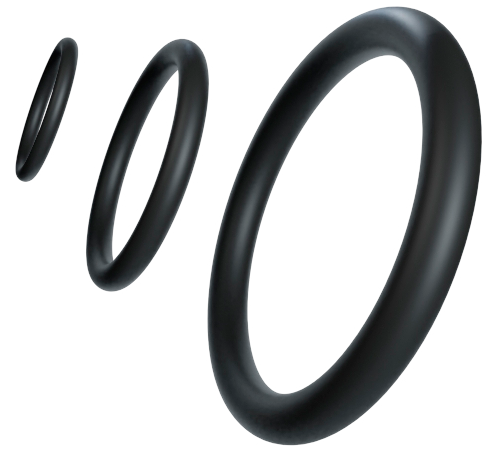O-Ring Materials
HNBR | Hydrogenated nitrile rubber
This elastomer offers a unique combination of properties that make it ideal for applications in demanding environments.
What is HNBR?
HNBR is a hydrogenated nitrile rubber, an improved version of NBR (Nitrile) that has been modified to improve its resistance to extreme temperatures, oils and chemicals. This modification provides exceptional durability and performance.

Advantages of HNBR
HNBR (Hydrogenated Nitrile Rubber) is a high performance material used in the manufacture of O-rings, especially in applications requiring superior resistance to extreme conditions. Its main advantage is its excellent resistance to aggressive chemicals, such as oils, fuels and solvents, as well as its ability to withstand high temperatures and its resistance to degradation by ozone and ultraviolet radiation.
HNBR also stands out for its high durability and elasticity, which ensures reliable sealing under demanding conditions, making it ideal for industries such as automotive, petrochemical and aeronautics.
High temperature resistance:
It can operate efficiently in a range of -40°C to 150°C, allowing it to be used in both extreme cold and intense heat.
Durability and Resistance:
It offers very good resistance to wear, abrasion and aging, ensuring long-lasting performance.
Compatibility with Oils and Chemicals:
It has a high resistance to oils, fuels and many chemical products, surpassing NBR in this aspect.
Ozone and UV resistance:
Better weather resistance compared to NBR, making it suitable for outdoor applications.
Common HNBR Applications
Automotive:
Gaskets in engines, transmission systems and fuel systems due to its resistance to oils and high temperatures.
Oil and Gas:
Gaskets in drilling and production equipment, where materials that withstand extreme conditions are required.
Aerospace:
Seals and gaskets in equipment exposed to extreme temperatures and aggressive chemicals.
Food and Pharmaceutical:
Components in equipment requiring resistance to grease and chemicals, as well as compliance with hygiene standards.
Hydraulic equipment:
Seals in hydraulic systems operating at high pressures and temperatures.
Limitations:
Do you have any doubts? Do you want to know which material is the most suitable for your needs?
Write to us at
hoseco@hoseco.com





